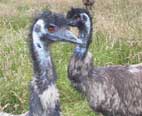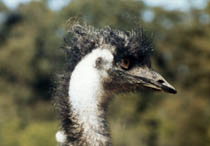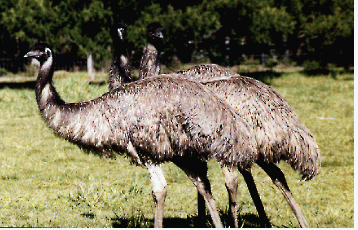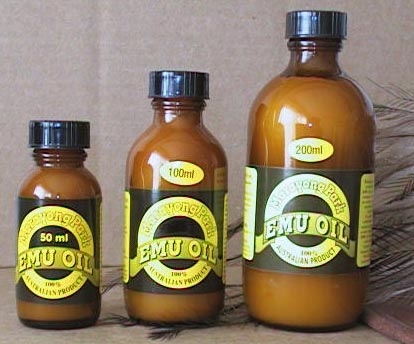About Emus |
Australian Emu (Dromaeus Novaehollandiae)
 Standing over 1.8m tall and weighing approximately 50kg, the Emu is Australia's largest bird. A nomadic flightless creature, the Emu can be found roaming wild, from the lush high rainfall areas of southern coastal Australia to the arid expanse of the inland region. Feeding mainly on grains, insects, nuts and new seedlings, these attractive birds are sometimes found in large flocks, but more often in paired or family groups.
Standing over 1.8m tall and weighing approximately 50kg, the Emu is Australia's largest bird. A nomadic flightless creature, the Emu can be found roaming wild, from the lush high rainfall areas of southern coastal Australia to the arid expanse of the inland region. Feeding mainly on grains, insects, nuts and new seedlings, these attractive birds are sometimes found in large flocks, but more often in paired or family groups.With the approaching rains, and cool weather in April,the female will lay one egg every 3-4 days, with the total egg clutch about twelve.The male takes responsibility for the nest, incubating the eggs over a 56 day period
(during which he does not eat or drink), and rearing the striped coloured chicks until they are able to fend for themselves , ussually 12-15 months .
EMU FARMING
The emu is principally farmed for low-fat meat, high quality leather and oil. Emu oil has a reputation largely derived from its traditional use over hundreds of years by the Australian Aboriginals. Western Australia was the first State in Australia to allow commercial emu farming in 1970, with approval being given in Queensland in 1987 to the Cherbourg Aboriginal Community to capture 300 wild emus for a primary breeding stock.
Now each State allows for emu farming in one form or another, with State and National Associations formed to look after member needs. Emu farming is a growth
 industry, with massive potential to earn domestic and export dollars, and at the same time contribute to the ecological regrowth of the Country.
industry, with massive potential to earn domestic and export dollars, and at the same time contribute to the ecological regrowth of the Country.An emu farm is a very environment-friendly operation, with virtually no ground clearance necessary, and often a tree planting program required. Emus are soft-footed birds, ensuring no damage to the land on which they are farmed, and being native animals, are less prone to disease.

 The meat is extremely lean, low in fat and cholesterol, with the meat from farmed birds (the only sort I have eaten) having a taste similar to a fine cut of beef, but opinions vary. Surprisingly, the meat is red rather than white, and can be cooked in as many ways as more traditional meats, from stir-frys and kebabs to thick BBQs and roasts.
The meat is extremely lean, low in fat and cholesterol, with the meat from farmed birds (the only sort I have eaten) having a taste similar to a fine cut of beef, but opinions vary. Surprisingly, the meat is red rather than white, and can be cooked in as many ways as more traditional meats, from stir-frys and kebabs to thick BBQs and roasts.